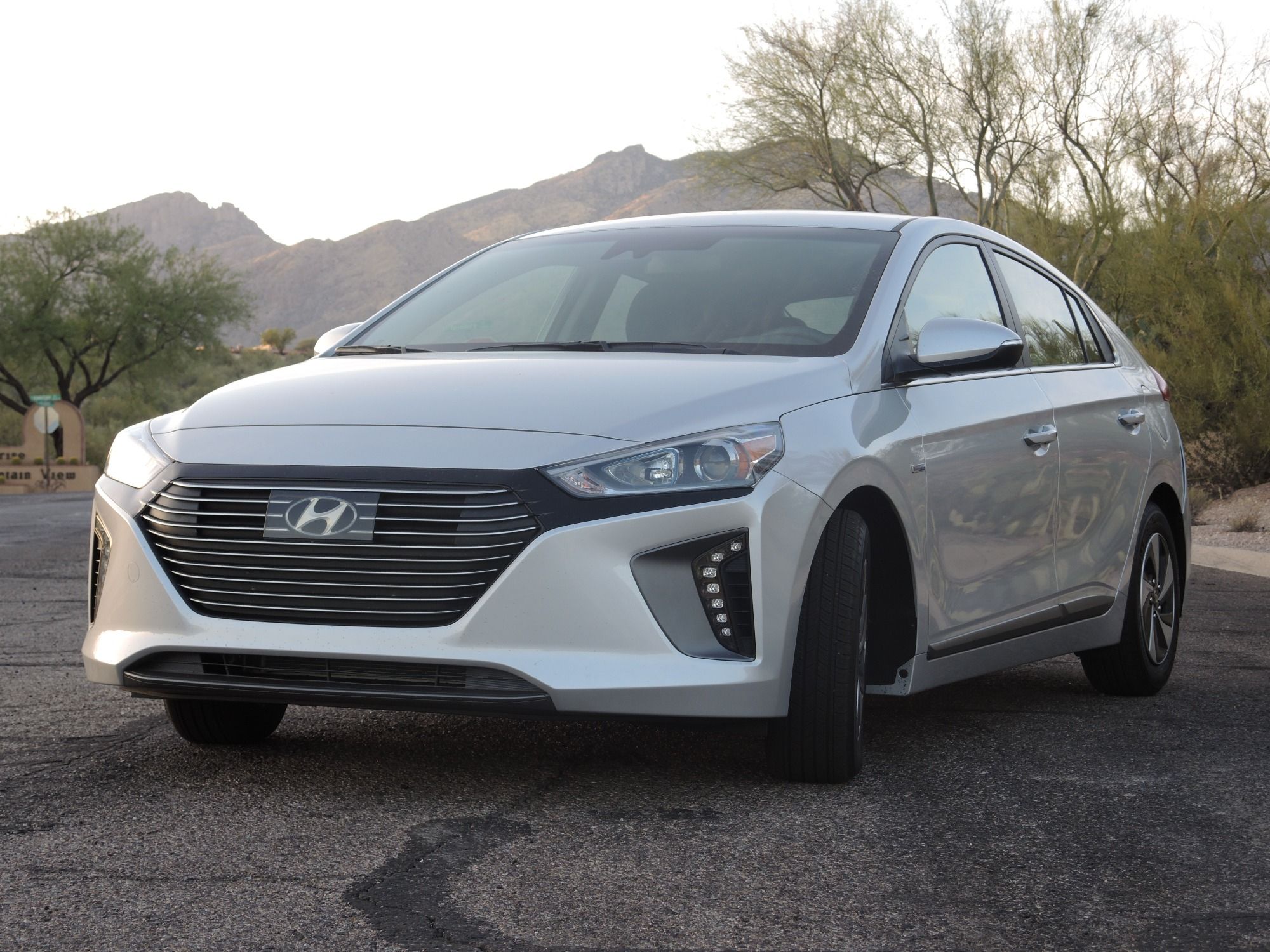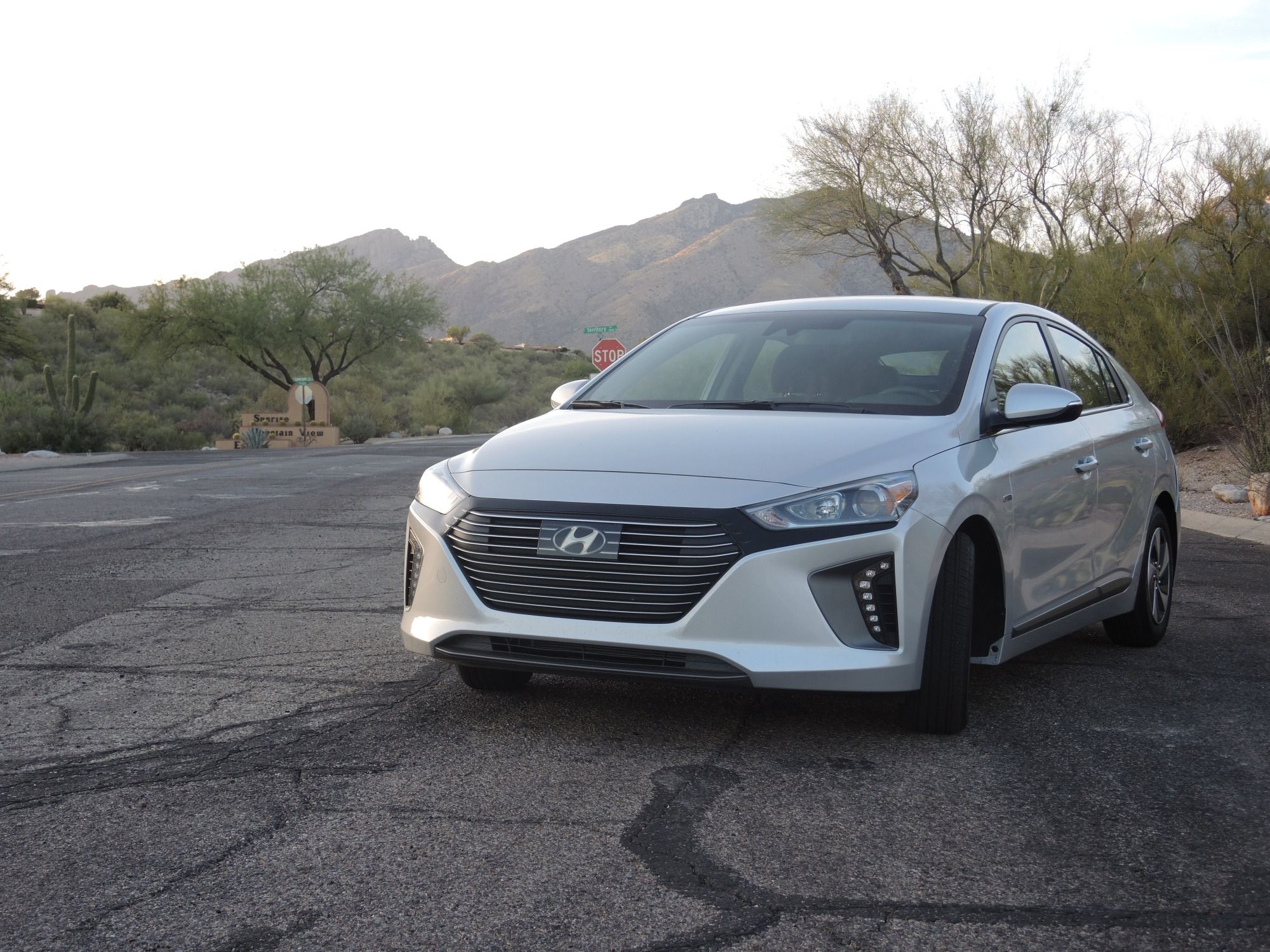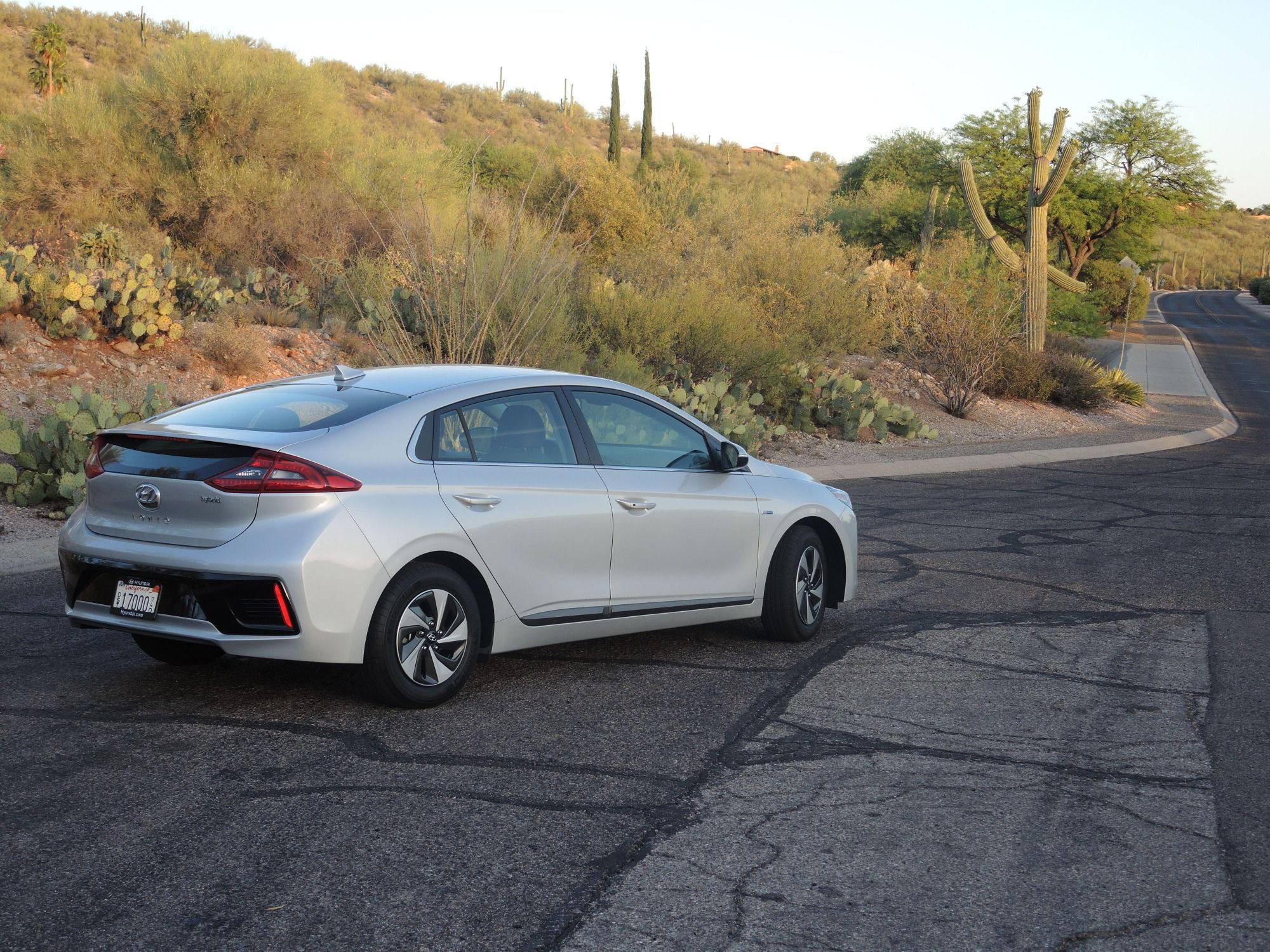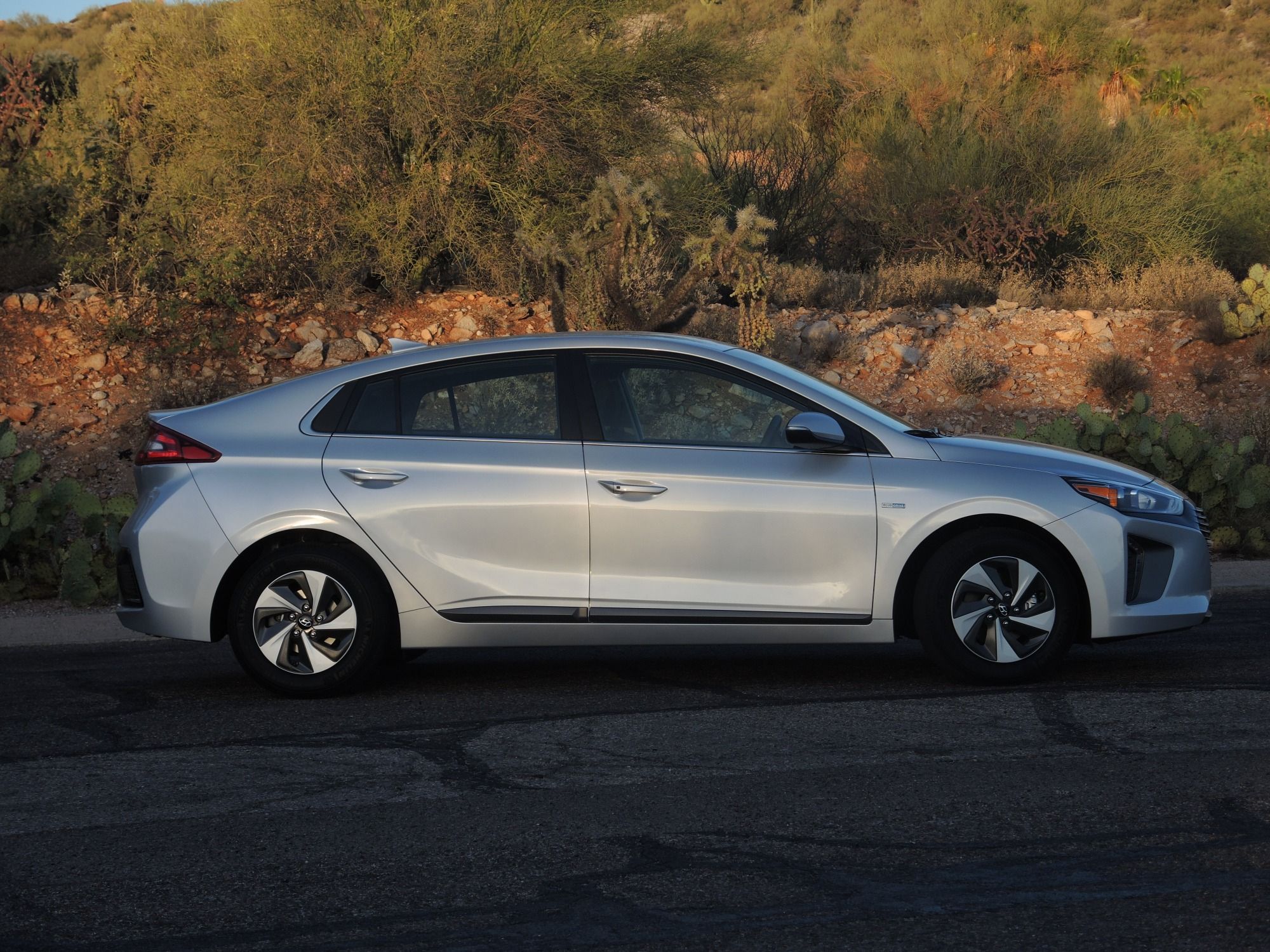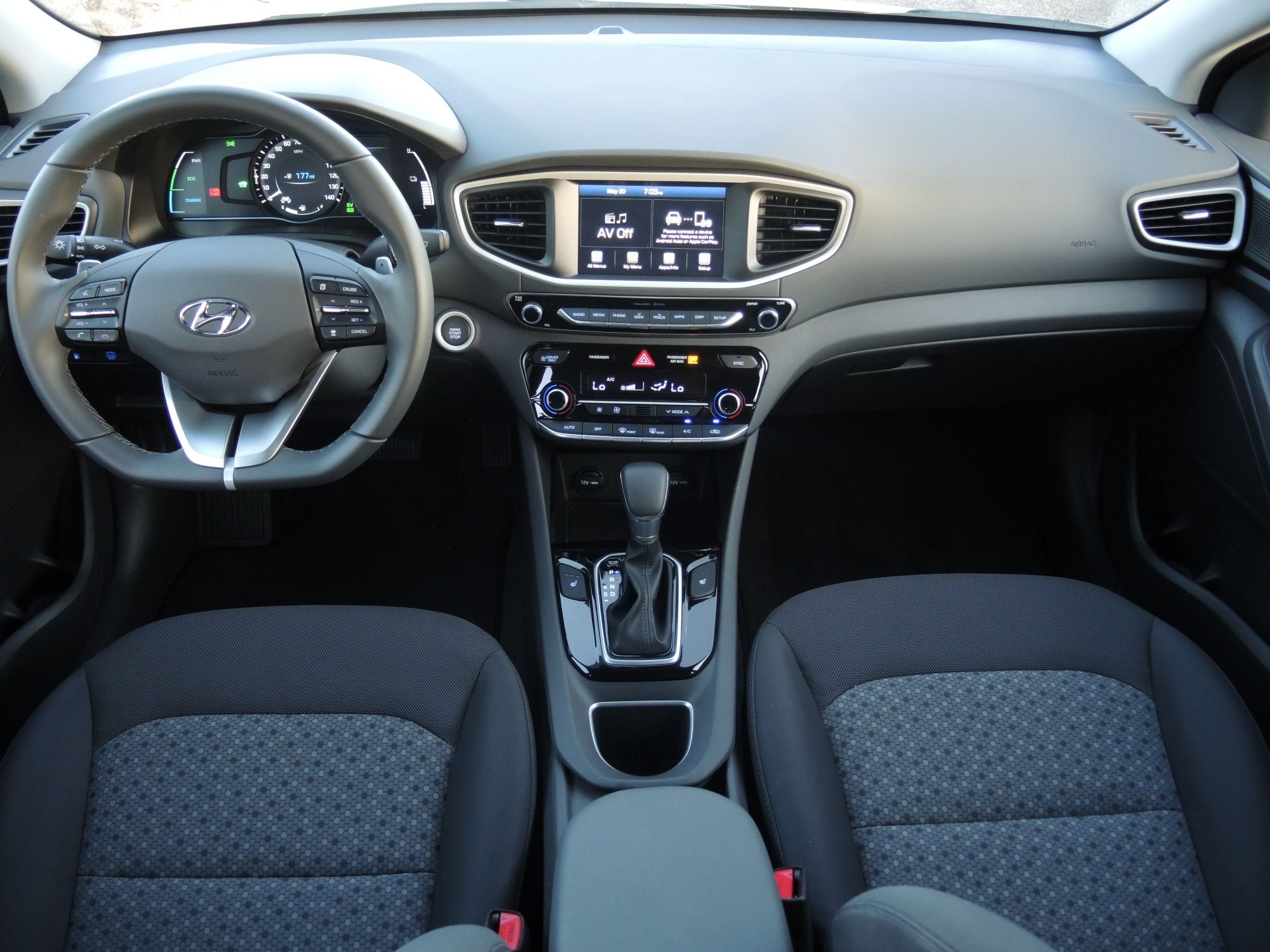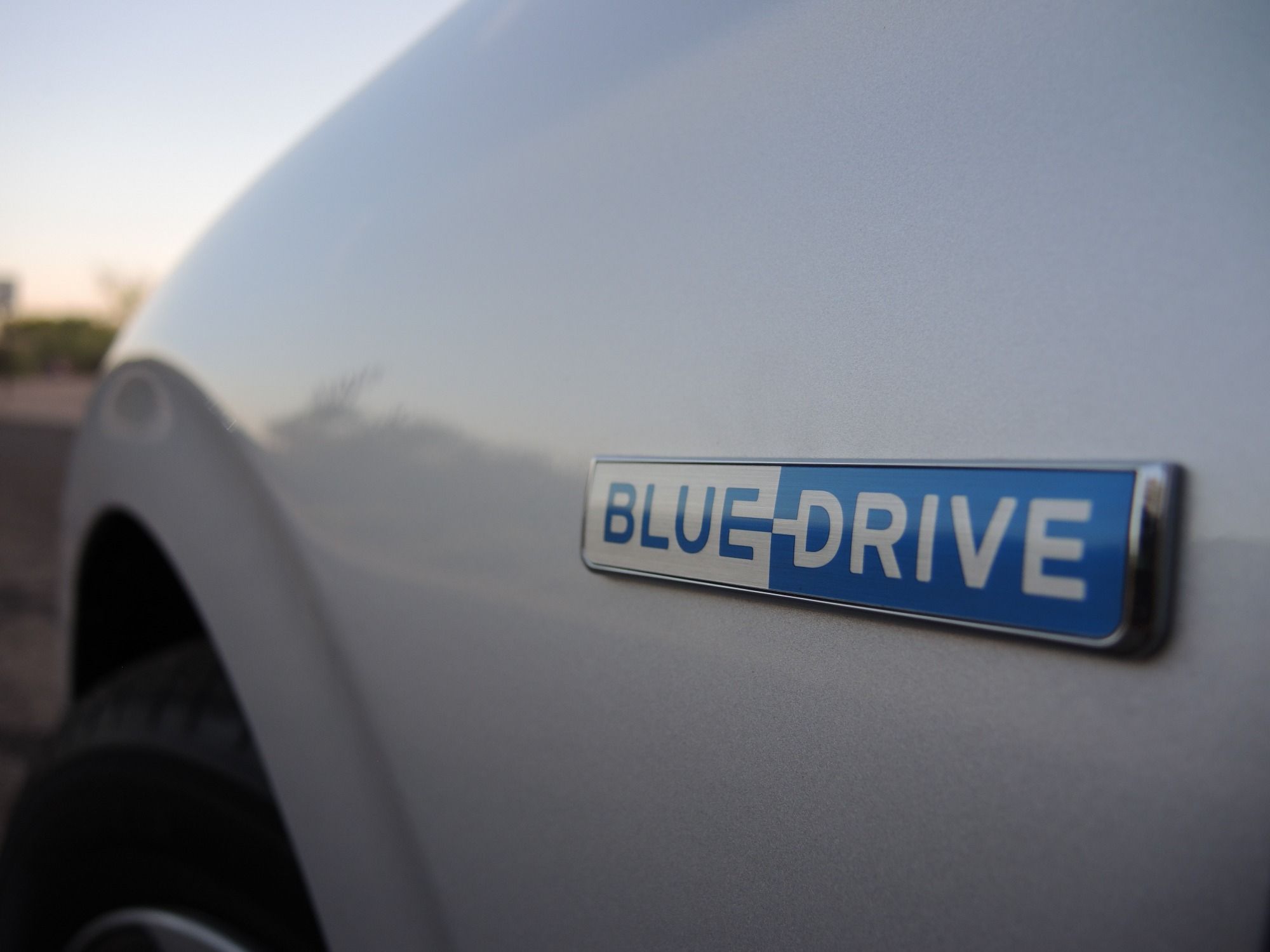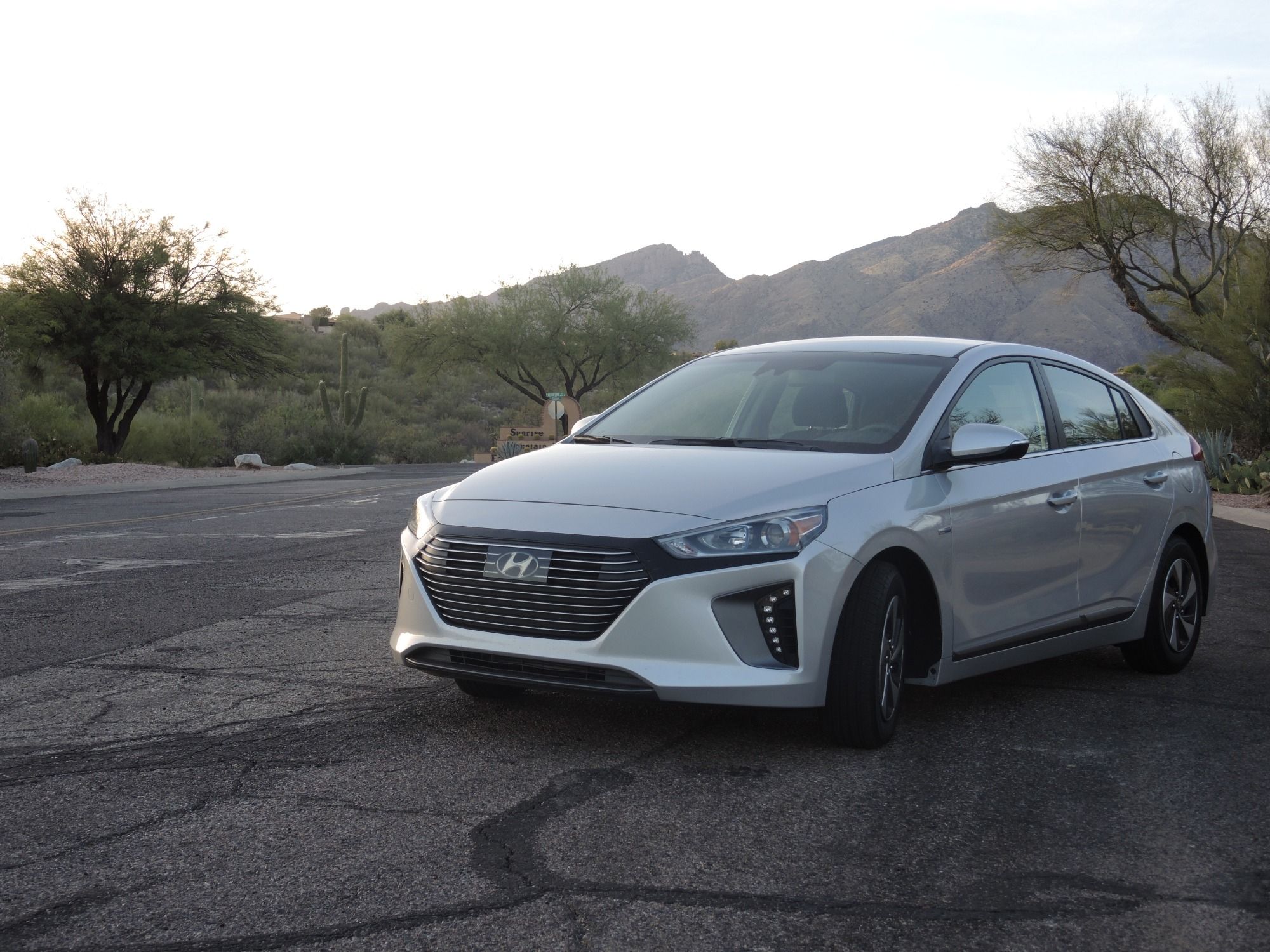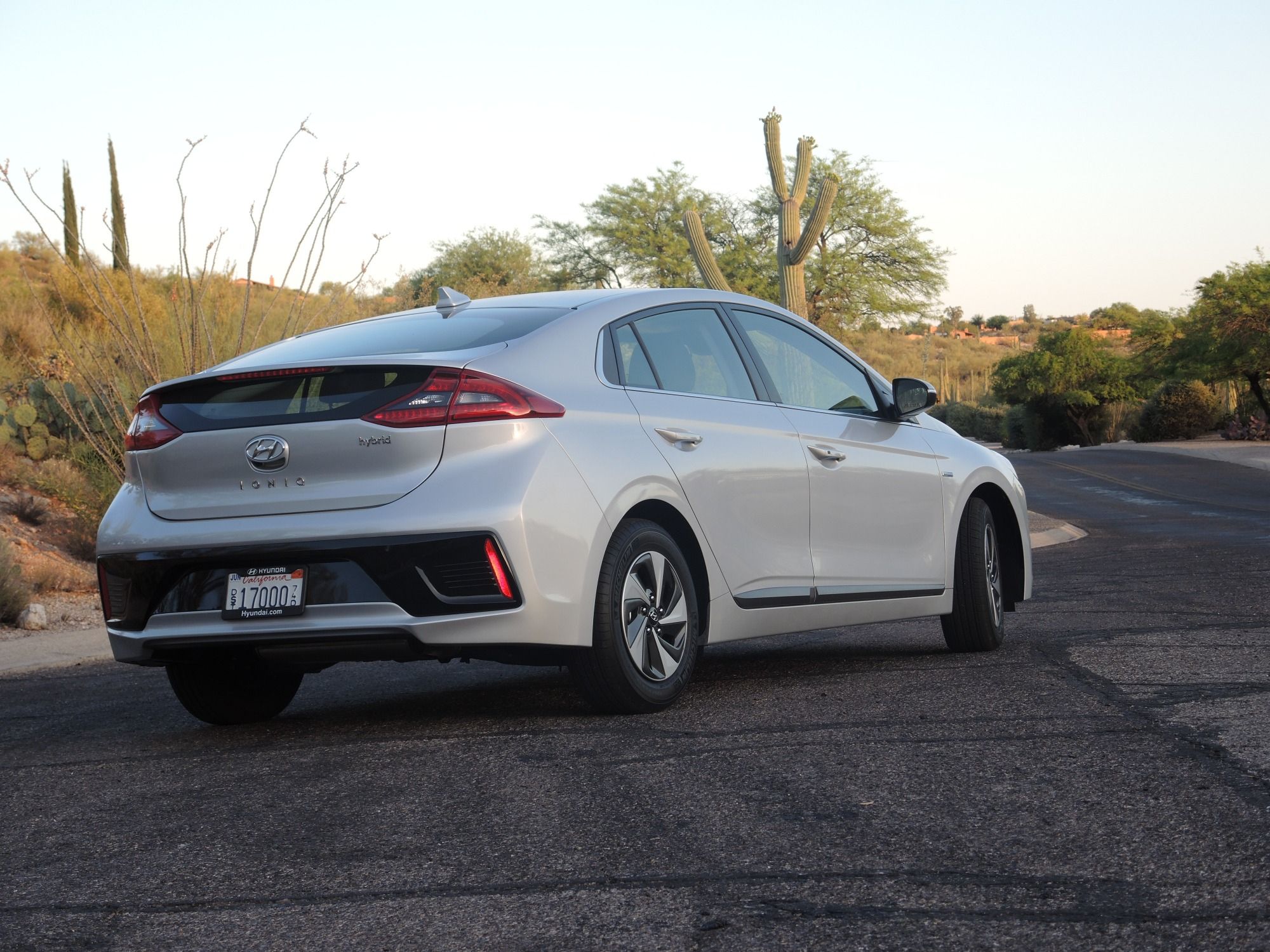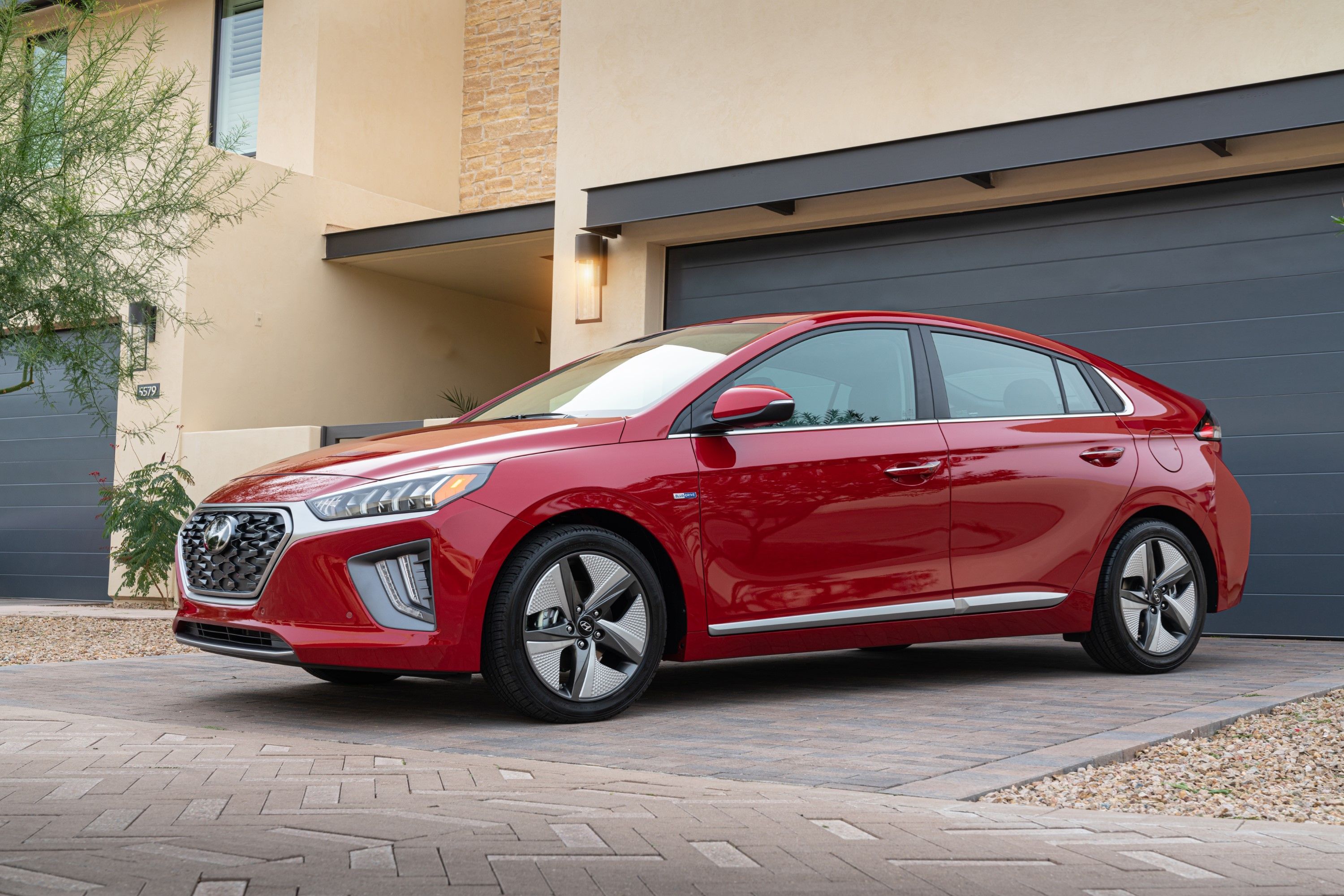
Ironically enough my week with the Hyundai Ioniq Hybrid was full of trips to the gas station, six in total if you're counting. Some stops were for Red Bull during a road trip that started too early in the morning, others were for snacks along the way, and once I had to pull into a pump and clean up after a bird took out its anger at the human race all over the wrong car (aim for the gas hogs). Every time I got out, a single question sprung to mind: Why did Hyundai allow such a great car to leave the factory with such bad styling?
Taking in the Ioniq at a glance, it's clear designers wanted to capitalize on America's love of the Prius with their own take on the Toyota's proportions (don't tell me it's for aerodynamics, a Model S looks nothing like a Prius), but it almost seems like Korea did itself a disservice by not taking the opportunity to make a hybrid this good look the part. The front end is the most palatable portion of the Ioniq, brandishing an attractive modern grille, LED daytime running lights, and what appears to be twin air intakes embedded in the bumper to keep the car modern yet stylistically anonymous.
Move to towards the rear and the midsection reveals a rising belt line that ends awkwardly at the C-pillar. There, designers merged the lines of the upper body with the boxy rear, lending some resemblance to the rear of the Hyundai Veloster mixed with a hatch that echos the Prius. Hyundai's development team must have felt the same way about the car's looks as I did because the name "Ioniq" is a polite blend of the words "ion" and "unique." Though it's a shame to see another automaker squander the potential to gain greater acceptance of fuel-efficient cars through sex-positive design, looks aren't everything.
Especially when Hyundai made the Ioniq Hybrid so wildly efficient and fun to drive that it leaves Toyota looking silly for blaming the Prius' refrigerator dynamics on the pursuit of efficiency. Even on paper, the Ioniq beats the Prius at its own game. Hyundai's base "Ioniq Blue" boasts a combined EPA rating of 58 mpg. That's 2 mpg better than the Prius Eco and 4 more than the Prius Prime once the plug-in's battery reserve is gone. Higher trim Ioniq SEL and Ioniq Limited models gain a few pounds of luxurious insulation but still manage to out-eco the 52-mpg Prius with a 55 mpg combined rating.
Hyundai achieves these numbers by subscribing to all the typical milage warrior tactics-low rolling resistance tires, a slippery 0.24 drag coefficient, an engine that runs lean and features a thermal efficiency of 40%-but none of that hinders the way it drives. Unlike Toyota's famous hybrid, the Ioniq doesn't purvey a sense of disconnect between throttle input and drivetrain behavior, and that has a lot to do with the transmission. Instead of going with a CVT, Hyundai utilizes a six-speed dual clutch automatic, with paddle shifters no less, to send power to the front wheels. The execution of the system is pure genius.
That's because, while dual clutch transmissions are notorious for feeling jerky when pulling away from the stoplight, the Ioniq mitigates that effect by using torque from the electric motors to avoid the weak spots on the DCT's coverage map. The best result of this transmission choice is that acceleration is devoid of those droning revs that typically plague CVT-laden vehicles. Lexus, take note when it comes time to replace the LC500h. If there's one complaint to peg on the Ioniq Hybrid's drivetrain, however, it's the lack of drive modes. Hyundai only loaded the car's computer with two, Sport and Normal. The former is engaged by kicking the shifter to the left while in Drive and the latter stands as the default mode.
The problem is that Normal mode feels like what Eco does on most cars, meaning the Ioniq spends its life feeling like either a tortoise in a hare race or like an eager four year-old that's been fed as much caffeine as I consumed during that jittery pre-dawn road trip. A mode in between the two would make the Ioniq Hybrid easier to live with, but it would undoubtedly strip away the milage lead it's worked so hard to carve out over the Prius. But when the priority shifts from mpg to mph, the Ioniq opens up and becomes a comfortable highway companion for the relaxed cruise control user.
Given that my SEL model was loaded with the $1,000 Tech package that includes automatic emergency braking, lane keep assist, and an intelligent cruise control system, my sleep-deprived mind no longer posed danger to other road inhabitants. And even out in the twisties of my local mountain pass where the Ioniq's steering reminded me of the meaning of the phrase "dead as doornails," the wheel's directness and the absence of body roll made it easy to stay on top of the Ioniq when the low rolling resistance tires were squealing. The chassis nearly pushed that confidence into the realm of cockiness by remaining tight as a 3 Series', as if every bolt was torqued to perfection and every joined seam was oiled liberally to muffle the squeaks.
Lately, Hyundai has been poaching designers and engineers from Audi and BMW to influence the aesthetic of the Genesis line and build hot hatches for its N sub-brand, but hints of German obsession has also made it to the Ioniq's cabin. Hyundai knows that the surfaces a driver frequently touches matter, so it ensured that the shifter felt as solid as King Arthur's sword when it was still parked in a rock and then used metal for the buttons that occupants most often play with. Longevity feels like a primary characteristic of the Ioniq's interior, but the Hyundai can thank brutal simplicity for that as much as it can credit skillful engineering.
Simplicity can also be read as "boring" because the grey of this tester's cabin could lull a white-nosed Tony Montana to sleep and serves as an unfortunate reminder that, as good as the Ioniq is from the driver's seat, the cramped passengers in the rear will be constantly reminded they are in a $26,000 car. Like the underlying philosophy used to build the rest of the car, the Ioniq's 7-inch touchscreen infotainment system never steals attention with its functional anonymity. It's quick, responsive, and avoids the pitfalls that the industry's worst systems find themselves in, yet never feels like a seamless extension of mind and machine like the outliers in the business. But it doesn't have to.
Loaded with Apple CarPlay and Android Auto, the Ioniq's infotainment system maintains an inherent leg-up on the Prius' and every other hybrid in Toyota's lineup. And if you really have to find another reason to love the Ioniq, look no further than the options list. Or rather, the lack of it. Hyundai only loaded the aforementioned Tech package and a set of $125 carpeted floor mats onto my Symphony Air Silver Ioniq. Everything else, the blind spot monitoring with rear cross-traffic alert, the infotainment system, the heated seats and dual climate control system, all of that was included in the $24,000 base price. Only the two options and a $885 destination charge pushed this hybrid to its $26,010 price tag.
As it was intended to be, the Hyundai Ioniq Hybrid is a simple package that doesn't break the bank, but the entire time behind the wheel I found one thing to be consistent: the Ioniq, like many other Hyundais, has suspicious lack of identity. It's not brutal simplicity that's to blame for the absence of character-or more accurately, its unassertive character-it's the knowledge that Hyundai still sees itself as the underdog, which becomes apparent when gripping the steering wheel. While the upcoming Veloster N is proof that the brand is going through adolescence and is experimenting with different identities, the Ioniq Hybrid still feels like a bundle of hormones-a well-built one at that-that is still trying to figure itself out.
Rather than taking bold moves to assert itself in shrinking territory, the Ioniq Hybrid is content doing its homework, nailing the crucial elements (our 55.5 mpg average is proof of that), and then fading into the background to avoid being hammered down by all the other nails that lie flush with the market. The Ioniq Hybrid's impressive mileage and confident drive are proof that Korea is ready to take yet another step up the ladder of the American auto market. All it needs is a bit more courage and wardrobe full of bold sheetmetal.

